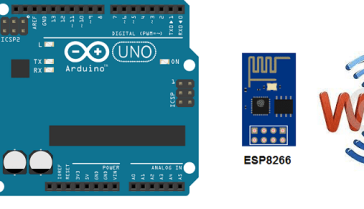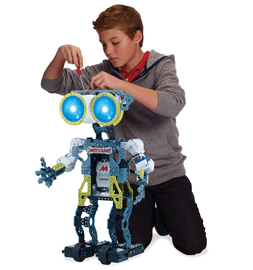NeoPixels, also known as WS2812B LEDs, can be used in conjunction with an Arduino microcontroller to create colorful and customizable lighting effects. The Arduino can control the NeoPixels via its digital output pins, using the NeoPixel library for the Arduino, which can be found on the Arduino Library Manager.
To use NeoPixels with an Arduino, you will first need to connect the NeoPixels to the Arduino‘s digital output pin. This can be done by connecting the data input pin of the first NeoPixel to the Arduino’s digital output pin and connecting the data output pin of the last NeoPixel to the data input pin of the first one creating a chain of NeoPixels.
Once the NeoPixels are connected, you can use the NeoPixel library to control the color and brightness of each individual NeoPixel. The library provides various functions such as setting the color, brightness, and animation of the NeoPixels. With the library and the Arduino’s capabilities, you can create a wide range of lighting effects, such as fading, scrolling text, and even creating custom animations.
It’s important to note that NeoPixels require a high amount of current to operate, therefore, you should use a separate power supply for the NeoPixels, and also, you should use a level shifter or a voltage divider circuit to avoid damaging the Arduino.
Purpose of this tutorial:
In this tutorial we will turn on Neopixels using Arduino.
Necessary components
Arduino UNO

The Arduino UNO is a microcontroller board based on the ATmega328P. It is a popular choice for beginners and hobbyists as it is easy to use and has a wide range of available libraries and tutorials. The board has 14 digital input/output pins (of which 6 can be used as PWM outputs), 6 analog inputs, a 16 MHz quartz crystal, a USB connection, a power jack, an ICSP header, and a reset button. It can be programmed using the Arduino IDE, which supports C and C++ programming languages and has a simple and user-friendly interface. The board can be powered via USB or an external power source, and can be used to control and interface with various electronic devices and sensors.
Neopixels of 8 LEDs
![]()
NeoPixels, also known as WS2812B LEDs, are individually addressable RGB LEDs that can be controlled to create various lighting effects. Each NeoPixel consists of a red, green, and blue LED, and a tiny microcontroller that controls the brightness and color of the LED. A string of 8 NeoPixels can be controlled using a microcontroller, such as an ESP32, to create a variety of lighting effects.
Test plate

A test plate for Arduino is a type of test plate that can be used in conjunction with an Arduino microcontroller to automate experiments or tests. The test plate typically contains multiple wells or compartments that can hold samples or test solutions, and is designed to interface with the Arduino’s digital inputs and outputs.
Connecting wires

Wires in a robotic system are used to connect and transmit electrical signals between different components of the robot. These components can include sensors, actuators, motors, and the microcontroller, such as an Arduino. The wires in a robotic system are typically made of copper and are insulated to prevent electrical interference and short circuits.
The type of wires used in a robotic system depends on the specific application and requirements of the robot. For example, a robot that requires high-current power transmission may use thicker, high-gauge wires, while a robot that requires a high degree of flexibility and movement may use thinner, more flexible wires.
Wires in a robotic system can be used to transmit power, control signals, and data between the different components of the robot. They can also be used to connect the robot to external devices, such as a computer or a power source. The proper use of wires is crucial for the robot to function properly, and a bad wiring can cause malfunction, safety hazards, and even damage to the equipment.
It is important to use the right type of wire for the right application, and it is also important to keep the wires organized and secure to prevent them from getting tangled, damaged, or disconnected.
Assembly
To carry out the assembly, you can connect:
-
Neopixels GND pin to Arduino GND pin
-
the 5V pin of Neopixels to the 3.3V pin of Arduino
-
Neopixels DI pin to Arduino pin 2

Arduino Program
Here is the program that allows Neopixels to be turned on by the Arduino.
|
1 2 3 4 5 6 7 8 9 10 11 12 13 14 15 16 17 18 19 20 21 22 23 24 25 26 27 28 |
#include <Adafruit_NeoPixel.h> #ifdef __AVR__ #include <avr/power.h> #endif #define PIN 2 #define NUMPIXELS 8 Adafruit_NeoPixel pixels(NUMPIXELS, PIN, NEO_GRB + NEO_KHZ800); #define DELAYVAL 500 void setup() { #if defined(__AVR_ATtiny85__) && (F_CPU == 16000000) clock_prescale_set(clock_div_1); #endif pixels.begin(); } void loop() { pixels.clear(); for(int i=0; i<NUMPIXELS; i++) { pixels.setPixelColor(i, pixels.Color(255-i*10, 20*i, 10+i*15)); pixels.show(); delay(DELAYVAL); } } |



















